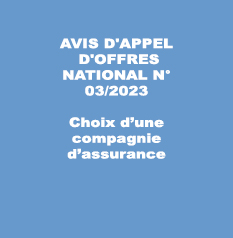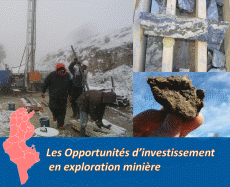| Programme annuel & rapport de suivi technique |
-

Rapport d'activités 2023
-

Programmes Techniques 2024
|
| Géocatalogue |

|
| Appels d'Offres |
-

ACQUISITION DES TICKETS RESTAURANT POUR LE PERSONNEL DE L’ONM
-

CHOIX D’UNE COMPAGNIE D’ASSURANCE
-

ACQUISITION ET MISE EN ŒUVRE D’UN PROGICIEL DE GESTION INTEGRE
|
|
Investir en Tunisie |


|
|
|
|
|
::
Documentation and Editions
>>
Research library
|
| |
|
[
Search by author
]
[
Search keyword
]
[
Search by index
]
[
Search by category
]
|
title of the reference :
|
Crustal anomalies under the Tunisian seismograph array using teleseismic P waves.
|
|
Publication Date:
|
1985
|
|
Author :
|
Hfaiedh Mohamed, Dorel J., Dubois J.
|
|
Catalogue type :
|
Livre
|
|
Catalogue reference :
|
T.118 (NLD) Tectonophysics T.118 Crustal anomalies under the Tunisian seismograph array using teleseismic P waves. Etude des anomalies de la croûte dans la région du sismographe de Tunisie à l'aide des ondes télésismiques P. The object of this study is to understand the anomalies in the crustal structure under the seismograph array of Tunisia using teleseismic P waves at epicentral distances 30° < < 100°. By comparing the correction terms at pairs of neighbouring station, we have studied the variation of the travel-time anomalies as a function of azimuth and epicentral distance. More than 200 teleseisms recorded at four stations of the telemetered array from 1976 to 1979 are used. We have interpreted the traval-time anomalies between pairs of stations in terms of crustal structure. We propose a model with crustal thinning to the north and northeast of the Zaghouan station. This thinning reaches its maximum under the Menzel-Bouzelfa station in Cap-Bon. The model suggests that the Moho is dipping to about 18° to 20°, in good agreement with gravimetric data. bibliogr. levé sismique ; réseau sismique ; structure vitesse ; onde P ; Mohorovicic ; croûte terrestre ; correction ; temps parcours ; méthodologie analyse ; sismique réfraction ; modèle ; Manteau sup ; Tunisie ; Tunisie Nord Orientale ; Zaghouan ; Menzel Bouzelfa ; Cap Bon Dorel J. Dubois J. Hfaiedh Mohamed géophysique
|
|
Indexation decimale :
|
géophysique
|
|
Keywords :
|
levé sismique ; réseau sismique ; structure vitesse ; onde P ; Mohorovicic ; croûte terrestre ; correction ; temps parcours ; méthodologie analyse ; sismique réfraction ; modèle ; Manteau sup ; Tunisie ; Tunisie Nord Orientale ; Zaghouan ; Menzel Bouzelfa ; Cap Bon
|
|
Summary :
|
The object of this study is to understand the anomalies in the crustal structure under the seismograph array of Tunisia using teleseismic P waves at epicentral distances 30° < < 100°. By comparing the correction terms at pairs of neighbouring station, we have studied the variation of the travel-time anomalies as a function of azimuth and epicentral distance. More than 200 teleseisms recorded at four stations of the telemetered array from 1976 to 1979 are used. We have interpreted the traval-time anomalies between pairs of stations in terms of crustal structure. We propose a model with crustal thinning to the north and northeast of the Zaghouan station. This thinning reaches its maximum under the Menzel-Bouzelfa station in Cap-Bon. The model suggests that the Moho is dipping to about 18° to 20°, in good agreement with gravimetric data.
|
|
Exemplaries :
|
TU1429
|
|
|
|
|
|
|
|



